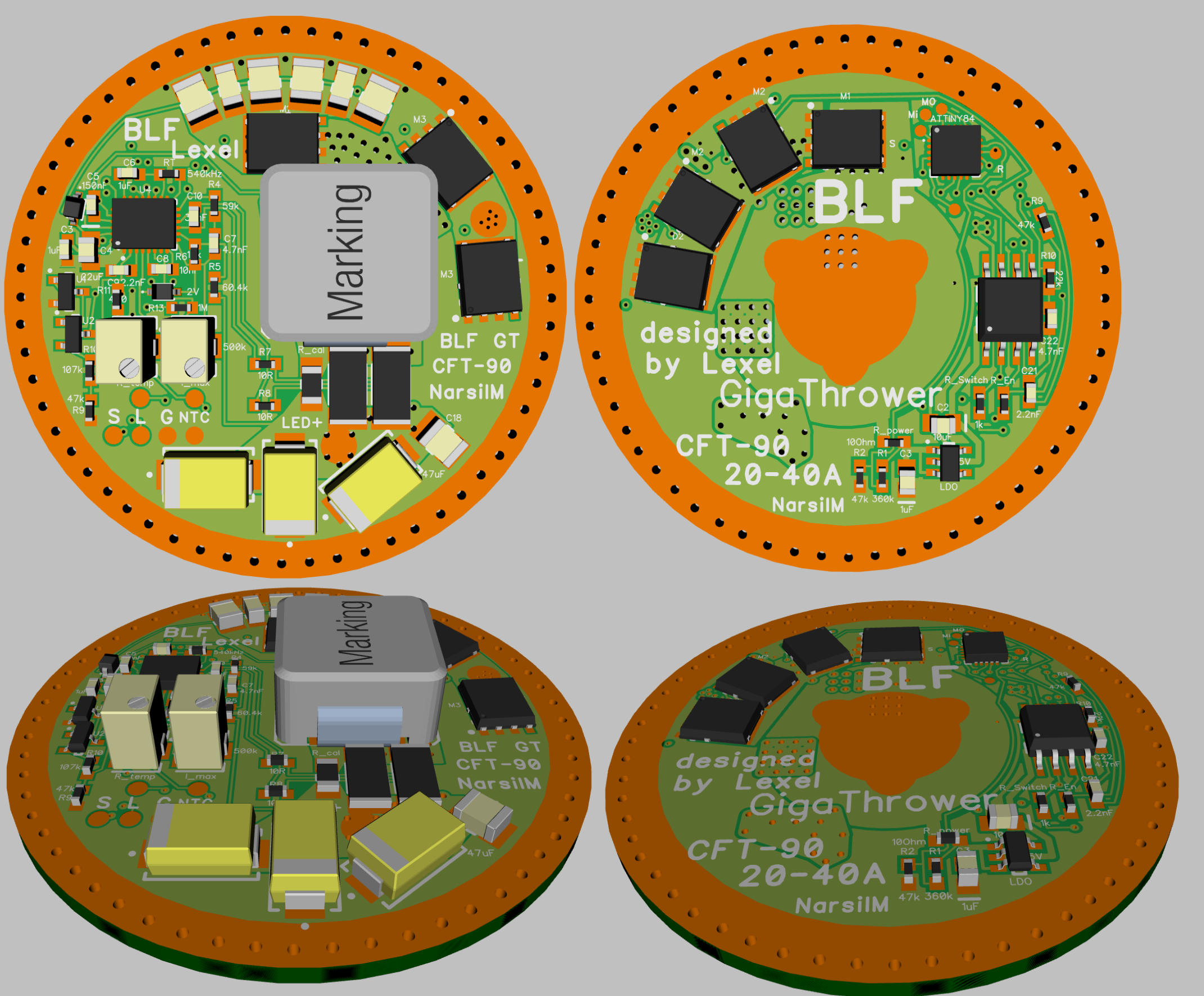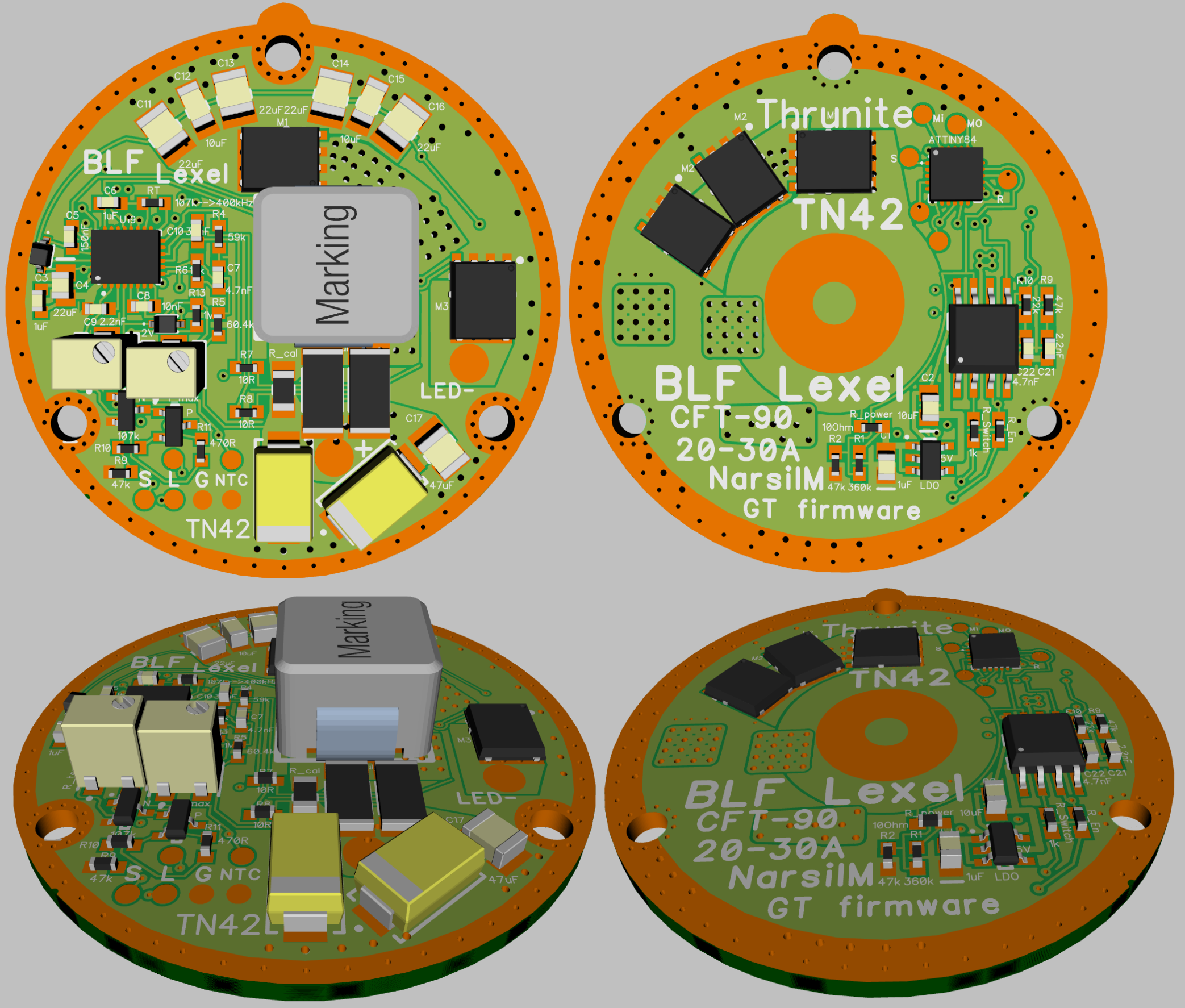Do you plan to make a boost driver for XHP35? If so, will it boost from 1S, 2S or both?
Yes, and both :+1:
Very nice ![]() . What max current do you expect?
. What max current do you expect?
roughly 6A with 6V config, up to 3A with 12V config
Waiting impatiently ![]() ….
….
Will it have the custom firmwares normally used here?
Initially Bistro HD, as to others - there’s hope that at least some will be ported.
3A @12V and 1-2s will be a nice option to have. I like the H2-C based XHP35 HI light I built, but I’d really like to push it past 1.5A.
Looking for Emisar D1 firmware, simple 3-4 modes, temperature controled
Really good thread about loneoceans’ new driver: [ GXB172 - 50W Single Cell 17mm Boost Driver! ]
This driver has many similarities compared to the driver I’m currently developing (with the help of some others).
I have another wish:
A compact boost driver for COB LEDs in the 30-40V range with all the usual features of flashlight drivers.
I found a nice calculation for MOSFET losses

We’re seeing more and more low-Vf 3V LEDs out there. Luxeon MZ, quad E21, Q8WP to name a few. These lose a lot of efficiency when driven linearly and could benefit from some good buck driver for 1s out and either 1-2s in. Or simply 1s in, that would be enough.
So literally just a 7135 driver?
The AMC7135 is a linear regulator.
Agro wants a real 1S buck regulator (with an inductor) like many production flashlights have. This improves efficiency (runtime) when the voltage difference between the LED and the battery gets larger.
Yes, that’s precisely what I want.
Q8WP driven to 1.25 A does ~124 lm/W with Vf of 3V.
Drive it linearly and you get about 96 lm/W throughout battery discharge.
Buck it with 95% efficiency and end-up with 118 lm/W.

next monday placing an order in my board fab


next monday placing an order in my board fab
Yes, that’s precisely what I want. Q8WP driven to 1.25 A does ~124 lm/W with Vf of 3V. Drive it linearly and you get about 96 lm/W throughout battery discharge. Buck it with 95% efficiency and end-up with 118 lm/W.
That calculation is not correct, correct calculation is:
Linear drive efficiency with fresh battery: n1=Vf/Umax=3/4.2=71.43%
Linear drive efficiency with empty battery: n2=Vf/Umin=3/3=~100%
Because discharge curve for typ. li-ions is fairly linear. no integration over time is needed to get average efficiency, it's simply average of n1 and n2 calculated above.
So, average efficiency of linear driver when driving LED with Vf=3V from 4.2V down to 3V is (71.43+100)/2=85,71%, and that means overall flashlight efficiency is 124lm/W*85,71%/100= 106,3lm/W.
Not as good as 95% efficient buck driver, but not that bad as some think. 1.25A is relatively low current these days,at higher currents efficiency of buck driver becomes similar to linear driver,but due to much higher internal resistances, buck driver will be in "out of regulation mode" sooner than linear driver, so there is almost no advantage at high current 1S setups.
Yes, that’s precisely what I want. Q8WP driven to 1.25 A does ~124 lm/W with Vf of 3V. Drive it linearly and you get about 96 lm/W throughout battery discharge. Buck it with 95% efficiency and end-up with 118 lm/W.
That calculation is not correct, correct calculation is:
Linear drive efficiency with fresh battery: n1=Vf/Umax=3/4.2=71.43%
Linear drive efficiency with empty battery: n2=Vf/Umin=3/3=~100%
Because discharge curve for typ. li-ions is fairly linear. no integration over time is needed to get average efficiency, it's simply average of n1 and n2 calculated above.
So, average efficiency of linear driver when driving LED with Vf=3V from 4.2V down to 3V is (71.43+100)/2=85,71%, and that means overall flashlight efficiency is 124lm/W*85,71%/100= 106,3lm/W.
Not as good as 95% efficient buck driver, but not that bad as some think. 1.25A is relatively low current these days,at higher currents efficiency of buck driver becomes similar to linear driver,but due to much higher internal resistances, buck driver will be in "out of regulation mode" sooner than linear driver, so there is almost no advantage at high current 1S setups.